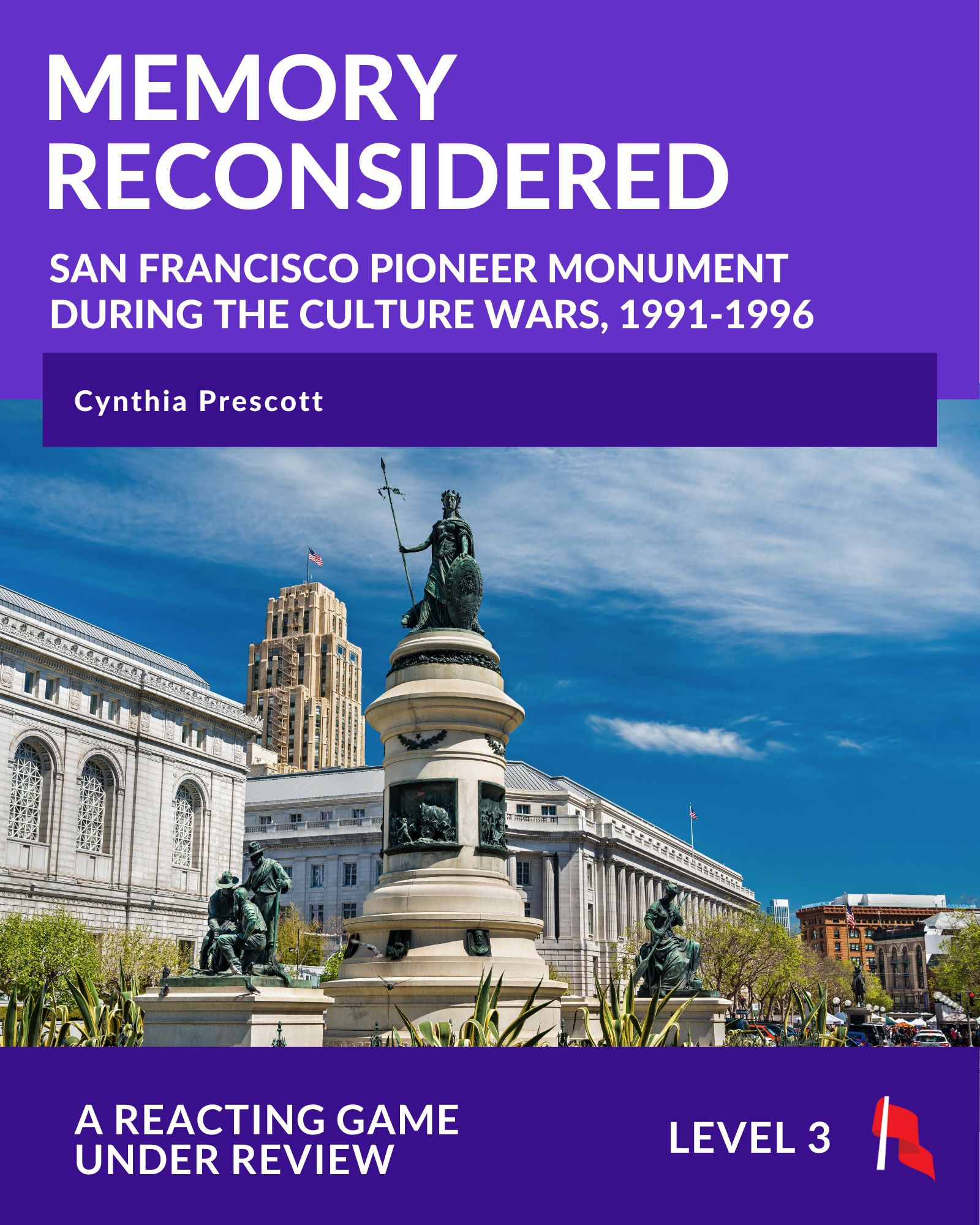 |

Play this game recently? | Responding to Controversial Monuments San Francisco’s Pioneer Monument was heralded across the United States when it was erected in 1894. It was one of the few structures to survive the city’s 1906 earthquake and fire. But as the city rebuilt, local residents forgot the 800-ton monument. A century later, a proposal to relocate the monument to make room for a new public library sparked public debate. Preservationists insisted on keeping the monument in its original location. Native activists found its depiction of California history offensive and called to remove the “California Native Americans” sculptural grouping. Efforts to reinterpret “California Native Americans” likewise sparked controversy. The Consul General of Spain, San Francisco’s Archbishop of the Roman Catholic Church, and many others objected to proposed text for an interpretive plaque explaining the impact of white settlement on indigenous Californians. Set against a backdrop of national debates surrounding the “Culture Wars” of the 1990s, game play will focus on these two debates. In Part I, players debate whether to preserve, relocate, or remove the statue. In Part II, players negotiate its reinterpretation. Players will engage with historiography (how historians interpret the past), historical memory, and identity politics. This is a Level 3 game that is still under development but has been approved by the Reacting Editorial Board (REB) for general use. A detailed explanation of the editorial process and game levels can be found on our REB Page. |
Details
|
Notable Roles |
|
Using the Game
Class Size and Scalability 12-31 Students. Basic game is 16 characters. Full game can be played by 12 by doubling up 3 roles and having GM track influence points. Additional players add complexity with additional side quests. Most characters are part of a faction in one part of the game and undecided in the other part. If playing only 1 part of the game, can focus casting on characters in active factions plus a few undecideds. Class Time 2 Setup Sessions and 2-6 Game Sessions. The game consists in two parts, each of which can be played separately. Part I runs 3-4 sessions; Part II runs 2 sessions. Possible Reacting Game Pairings This game can be used on its own, or with other games. These pairings are meant to be illustrative rather than exhaustive or prescriptive. Memory Reconsidered may pair well with:
Not all roles are expected to give a speech. |
 GAME MATERIALS
GAME MATERIALS
Reacting Consortium members can access all downloadable materials (including expanded and updated materials) below. You will be asked to sign in before downloading. Basic game materials (Gamebook, Role Sheets, Instructor's Guide, and Handouts) are available to any instructor through the publisher.
Please Fill out the Permissions Request Form Before Using Memory Reconsidered in Your Class!
Gamebook Students need a Gamebook, which includes directions, resources, and historical content. Memory Reconsidered is available to Reacting Consortium members to download. Updated December 2023 | Role Sheets Students also need a Role Sheet, which contains biographical information, role-specific resources or assignments, and their character's secret victory objectives. .zip file of .docx files | Instructor's Manual & Additional Materials The Instructor's Manual includes guidance for assigning roles, presenting historical context, assignments, activities and discussion topics, and more. .docx files |
Additional Resources
Cynthia Prescott
Cynthia Prescott is Professor of History at the University of North Dakota. She is the author of Pioneer Mother Monuments: Constructing Cultural Memory (University of Oklahoma, 2019) and Gender and Generation on the Far Western Frontier (University of Arizona, 2007). |
Members can contact game authors directly if they have questions about using the game. We also invite instructors join our Facebook Faculty Lounge, where you'll find a wonderful community eager to help and answer questions.
|
|
|


